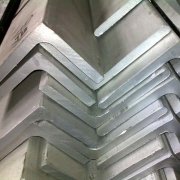
A Profile of Stainless Steel Angle

The stainless steel angle is the simplest but recognizable stainless steel shape. But don't be fooled by its simplicity. This configuration file has many obvious benefits for different uses.
Angle steel is one of the most common structural forms in architecture and construction. In its simplest form, a stainless steel angle has an “ l ” shape with a plane, horizontal and vertical extension, satisfying a 90 degree angle. This horizontal and vertical extension allows the strength of the stainless steel to angle in both directions. The steel angle can also be in two equal legs and the unequal leg size gives the engineer the ability to design the force distribution around each leg that is necessary. This is one of the main benefits of stainless steel angles and why they are used for structural and frame support.
In addition to strength, there are several other benefits to using stainless steel angles. Generally speaking, steel angles are lightweight and compact, making them very easy to work with regardless of the application. Stainless steel angles are very versatile as they come in a variety of sizes and alloys. Stainless steel structures can produce angles in the most common stainless steel alloys such as 304/L, 316/L and other grades such as duplex stainless steel and nickel alloys. Like other stainless steel profiles, this material requires little maintenance when used. Stainless steel has much better corrosion resistance and durability than other metals. By using stainless steel angles in your design, you will eliminate replacement costs and increase the life cycle of the structure.


